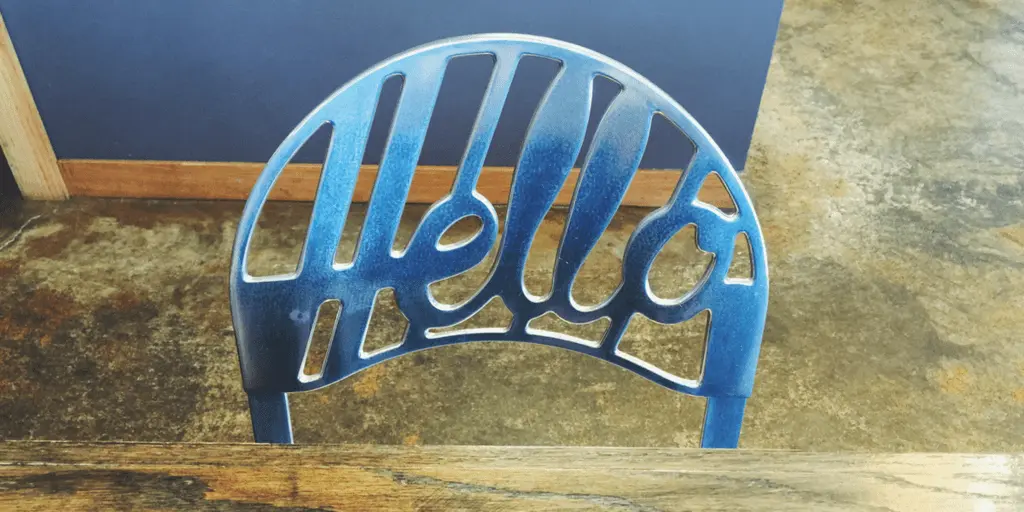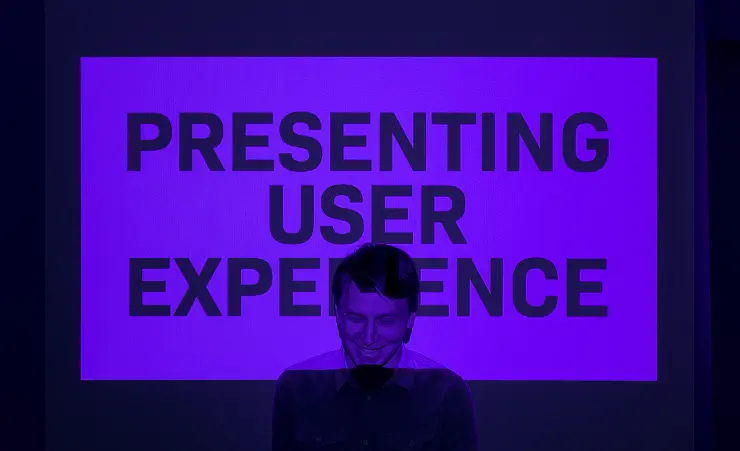
Design is all about balance. Clients want to meet specific business goals. People we are actually designing for have needs that are not yet defined. And on top of that, everything we propose has to be technically feasible.
To make sure your solution strikes a balance between all that we have mentioned, you have three radically different groups of skills to master. That’s why, understandably, you spend most of your time focusing on techniques that help you do so. There is one set of skills, often overlooked by designers, that has a huge impact on our work—presentation skills.
Why presenting is important
Most of us, design with a notion that good work will stand on its own. But reality, as it often does, gets in the way of that being the perfect process.
Even the best interface could be turned down by a client if we are unable to clearly explain its value. Stakeholders might not understand how the interface will help meet their goals or why the approach presented to them is the best for their business.
It’s our job to communicate all of the above. Design is a conclusion of everything we’ve discovered and it should be presented as such. I have realized that it’s best to approach a presentation as if it were a typical project.
Research
When trying to figure out which way to go with a project, starting with research is the safest bet. The most common problem in design presentations is forgetting to consider your audience. Taking a moment to think about clients and their expectations can come a long way. All it takes is a few minutes to go through the following questions:
- Who will be at the presentation?
- What is their role for this project and what do they need from you?
- What about you? What do you need to know by the end of the meeting?

Defining goals
Finding those answers helps to ensure the meeting will be productive and that by the end of it, nobody will be disappointed. Writing down your findings would naturally, be the next step in this process. When doing this, be sure to:
Define the needs of the participants
When you present your work, you have to do it in the context of the clients needs. To help do this—write down the goals or each participant while also considering their expectations and expertise. They could be interested in multiple things. They might want to know how your proposal will affect users, costs or sales.
Write down the type of feedback you expect
This will help you with setting the tone of the presentation and steering the discussion that will take place afterwards.
Designing the presentation
With clear goals in mind it’s much easier to plan a presentation. I’ve learned that at this stage, there are a few important things to keep in mind. Setting the stage is crucial, that’s why it has to be carefully prepared:
- Explain what you’ll be presenting. Every presentation needs a proper introduction. Explain what you are about to show and what type of feedback you are looking for.
- Anticipate their questions. People often get anxious at meetings so it’s best to address their worries upfront. Tell attendees how long the meeting will take, which phase of the project you are addressing, how they will contribute, and what the expected outcome of the meeting is.
Of course the presentation has to be properly structured as well. Instead of showing everything right away, it’s best to build up a bit of anticipation. This ensures that your idea will be understood and properly received:
- Start with a pitch. Begin with an elevator pitch of your idea to get people’s attention. Make it a short summary of what it is and what makes it special.
- Don’t show your design upfront. Make it a logical conclusion of the presentation. Summarise the problems you are attempting to solve and the expected outcomes.
- Stress the benefits. Summarise project goals, discovered problems and constraints you have faced. Use this part to explain how your solution meets all requirements and is a logical conclusion of all you agreed upon.
While presenting the actual design, properly guide everyone through it. Choosing the right narrative is essential here:
Acknowledge their vision
Clients come to us with a vision for a product. It’s up to us to capture it (usually through workshops) and carry it on through the development process. That’s why, we need to demonstrate that our design fits within this bigger picture.
Tell a story
Storytelling is the best tool to prove our solution is aligned with the product vision. By creating a narrative told from the users perspective we make it easier to imagine the app out in the world. Get in character and present your design by following one of the typical scenarios of use.
Iterating
It wouldn’t be a design process without iterations. Initial presentations help us get to know our client so we have to use this opportunity to adjust our approach:
Understand priorities
Every client is different, during the first meeting we usually can learn enough to get a feel for their priorities. With that in mind, we can adjust our approach and make further improvements to our presentations.
Verify methods
Sometimes the fidelity of our work can be a bit off. Aim too high and it’ll encourage people to get too much into details. Aim too low and they’ll have problems trying to imagine how the product will work.
This sums up the process I was able to put together over the span of working on a couple of projects. Following it helps me prepare and makes me feel more confident during client meetings we have at 10Clouds.
When presentation skills are crucial
Some clients are more involved than others only because they want to make sure that everything proposed to them, is right for their business. When working with clients like this, it isn’t uncommon for them to push their own ideas forward and as a result, take control of the presentation. That is why it is important for the presenter, to possess the ability to steer the client back in the right direction and do a thorough job at explaining why certain things are being proposed.
This is essentially what happened to me when I faced my first corporate client. Everyone was more concerned with what would be good for the business, often at the expense of actual users. I realised we reached a moment when the project was about to pivot in the wrong direction. I was losing control. Something was wrong with my approach and it needed to be fixed, fast.
Before the next meeting, I took more time to prepare. I worked out my first take using the process mentioned above and applied it step by step. And although I was asked to come up with multiple variations, I decided to show only one design—my recommendation.
Shortly after the presentation, it became clear that my new approach managed to put the project back on track. The dynamic had changed and everyone seemed to have more trust in what I was saying. There were a few reasonable concerns but other than that, everyone agreed to move forward with my idea. In comparison to previous presentations, I was amazed how well it all went. From that moment on, I was sure that taking the additional steps outlined above, can change the outcome of a meeting.
During every project there are a few critical points like this. That’s when you need to be prepared to stand your ground and make sure your project takes the right course!



